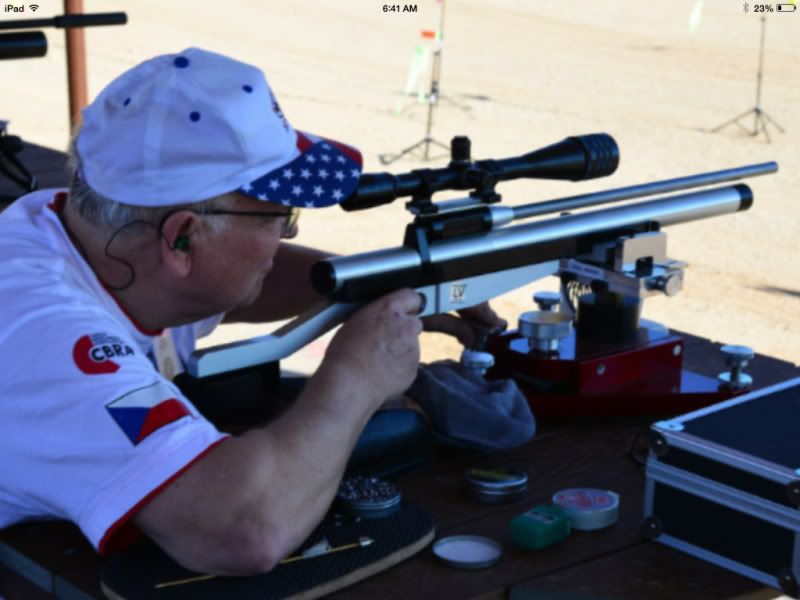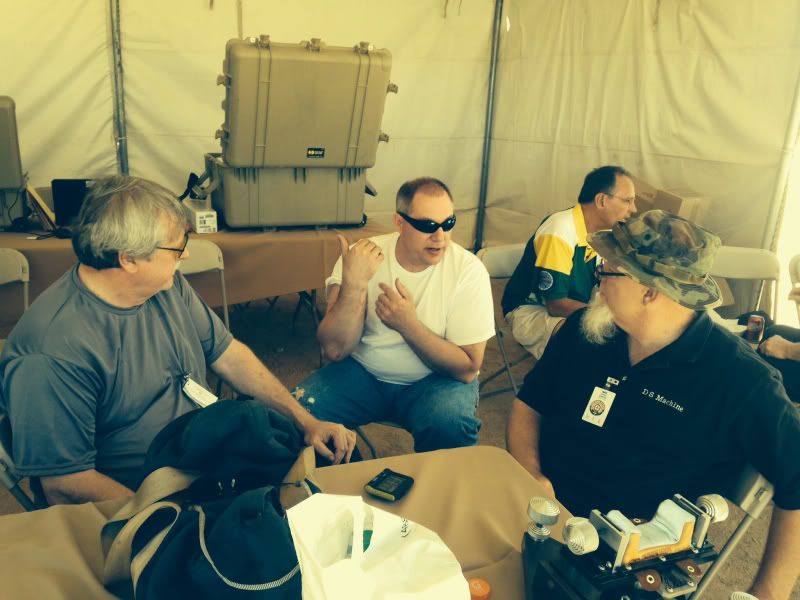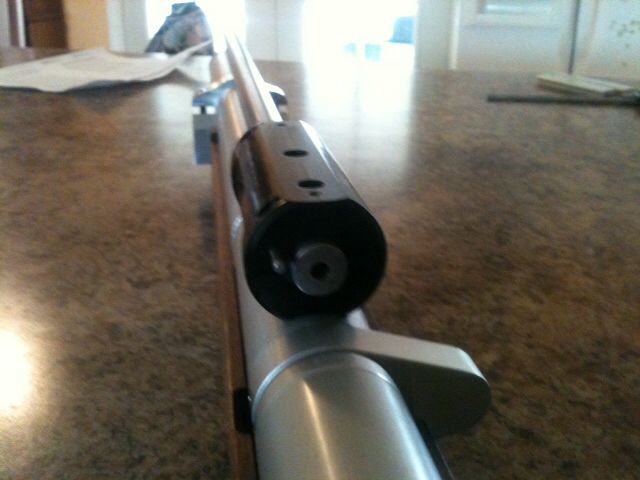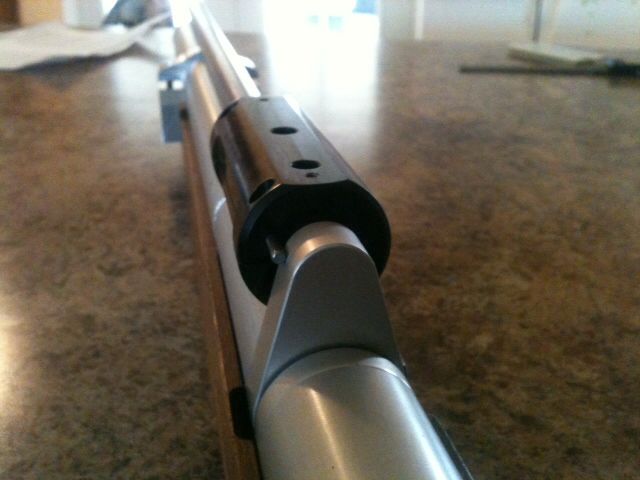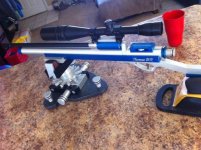Thanks guys!
Casey, if you've seen any of my other few YouTube videos, its clear that the only camera that I have is the one on my antique iPhone.

They are pretty poor.
Anyway, as you can see from Pauls pictures......the first step is swinging the transfer port thingie to the side......then you load your pellet and close.....then pull the trigger when ready. There is nothing to pull back or cock between shots.
A 9v batteries' power is amplified and regulated to a voltage that is user adjustable via a pot in the forend of the gun. This voltage adjustment is what is used to control the force of the strike. The circuitry will maintain the exact output voltage no matter what the charge condition of the 9v battery is. The amplified voltage is used to charge a pair of capacitors. The trigger has two functions. When relaxed.....it is forming the circuit to charge the caps. When pulled, it dumps the caps into the solenoid in the rear of the gun. Once released.....charging resumes to ready the next shot. A fully charged battery will charge the caps in a second or two, and a nearly dead (6v or so) 9v will take 5 seconds or so to fully charge the caps. That is the only difference between a fresh battery and a dead one. Either way......it's faster than a person could load a pellet. Early testing got over 5000 shots on one 9v. There is a switch in the front of the gun to turn on and off the charge circuit.
Once the caps dump into the solenoid......the solenoid core jumps forward and strikes the valve stem like a conventional gun. There is no heavy spring propelling the "hammer", so the return of the core is very quick. There is actually a spring that assists return on the rear of the core.
The quick opening and closing of the valve would look like a short square wave pulse, rather than a drawn out sine wave like a conventional gun. There is no possibility of hammer bounce......no matter how low the pressure is.
The gun was much quieter than any unsilenced gun on the line at the Nats. It also has a very, very smooth shot cycle compared to conventional guns. Every person that shot it at practice made the same comment. They said that they would not have known that it fired if they didn't see the hole it made in the paper.
The gun can be de-gassed with your finger. Unscrew the rear cap, push the core into the valve stem and hold until it empty. No tools needed.
Typical spreads are maybe 3-5 FPS. I have been able to adjust the strike to work together with the valve on every gun that I have built to hold 1-2 FPS spreads......but the gun is slightly less accurate in that condition (maybe 3-5 x's on an indoor card). I believe it is due to the extra air after the pellet exits......which must disrupt the pellets flight a bit.
I'm sure most people have thought my indoor scores were BS.....and I don't blame them. I'm happy to have guns in Paul and Mark's hands, now. I think they will easily reproduce or surpass my own results in a short time.
We'll see.
Mike
That's about all I can think of for a description.
